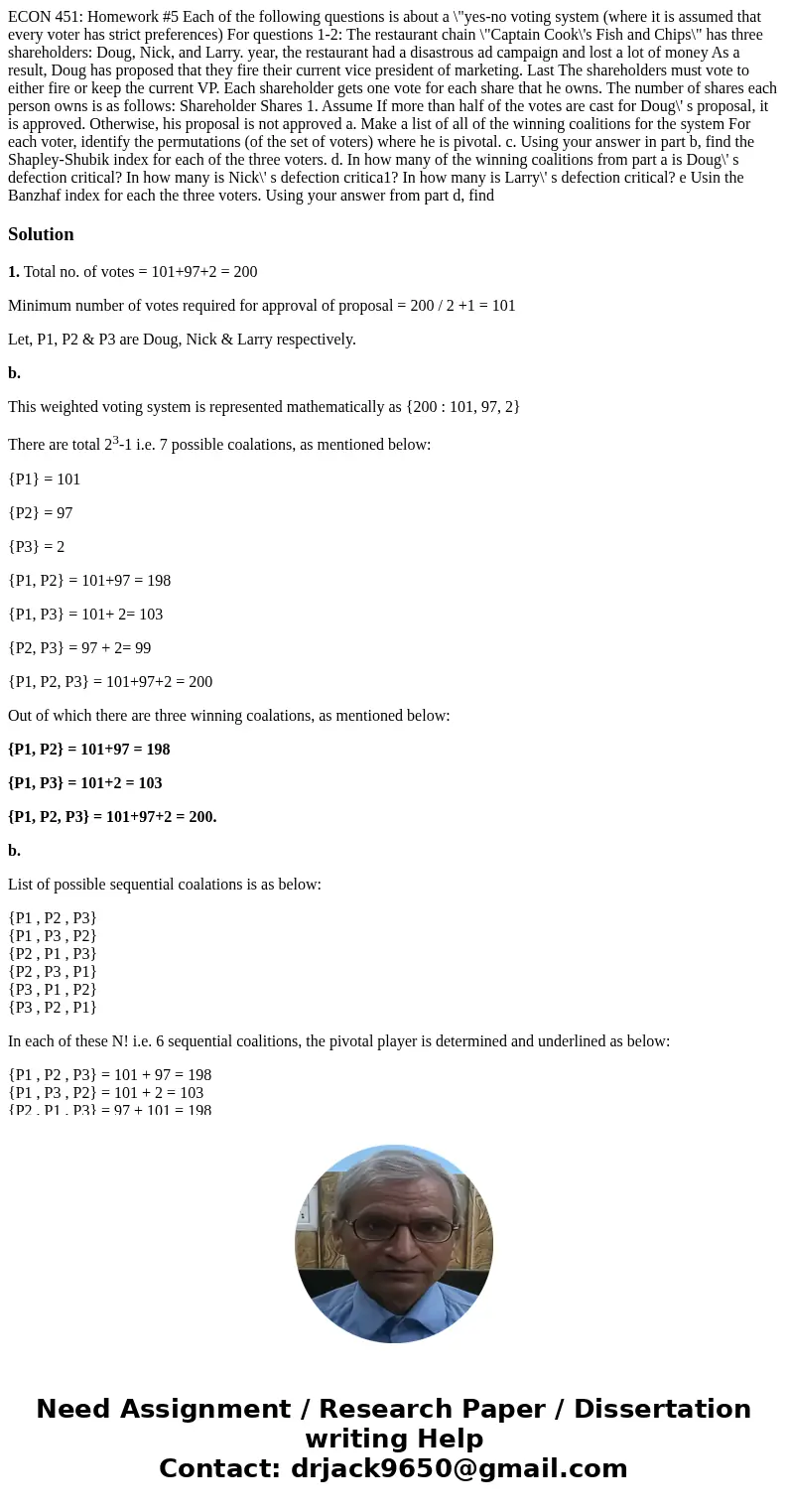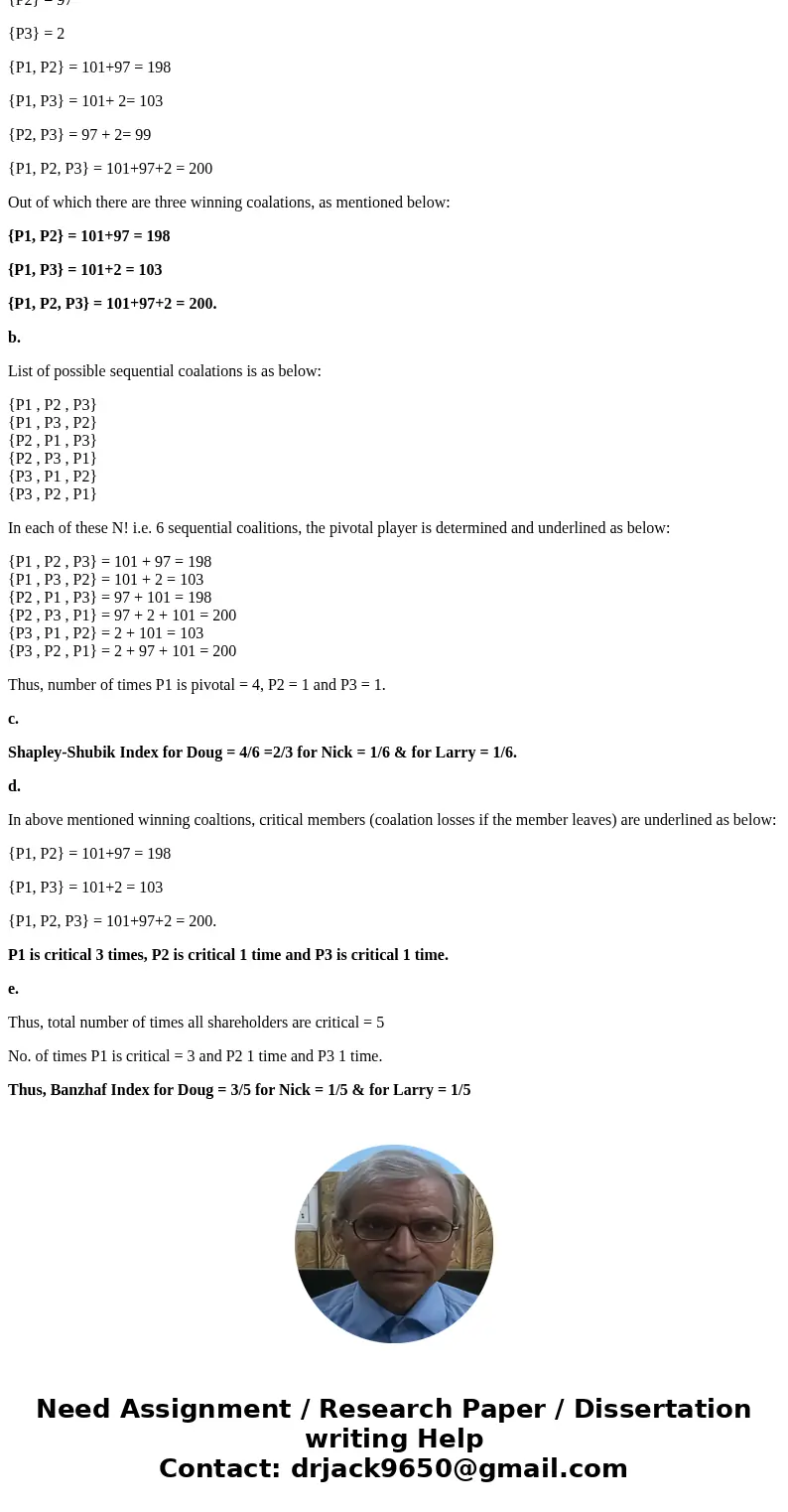ECON 451 Homework 5 Each of the following questions is about
Solution
1. Total no. of votes = 101+97+2 = 200
Minimum number of votes required for approval of proposal = 200 / 2 +1 = 101
Let, P1, P2 & P3 are Doug, Nick & Larry respectively.
b.
This weighted voting system is represented mathematically as {200 : 101, 97, 2}
There are total 23-1 i.e. 7 possible coalations, as mentioned below:
{P1} = 101
{P2} = 97
{P3} = 2
{P1, P2} = 101+97 = 198
{P1, P3} = 101+ 2= 103
{P2, P3} = 97 + 2= 99
{P1, P2, P3} = 101+97+2 = 200
Out of which there are three winning coalations, as mentioned below:
{P1, P2} = 101+97 = 198
{P1, P3} = 101+2 = 103
{P1, P2, P3} = 101+97+2 = 200.
b.
List of possible sequential coalations is as below:
{P1 , P2 , P3}
{P1 , P3 , P2}
{P2 , P1 , P3}
{P2 , P3 , P1}
{P3 , P1 , P2}
{P3 , P2 , P1}
In each of these N! i.e. 6 sequential coalitions, the pivotal player is determined and underlined as below:
{P1 , P2 , P3} = 101 + 97 = 198
{P1 , P3 , P2} = 101 + 2 = 103
{P2 , P1 , P3} = 97 + 101 = 198
{P2 , P3 , P1} = 97 + 2 + 101 = 200
{P3 , P1 , P2} = 2 + 101 = 103
{P3 , P2 , P1} = 2 + 97 + 101 = 200
Thus, number of times P1 is pivotal = 4, P2 = 1 and P3 = 1.
c.
Shapley-Shubik Index for Doug = 4/6 =2/3 for Nick = 1/6 & for Larry = 1/6.
d.
In above mentioned winning coaltions, critical members (coalation losses if the member leaves) are underlined as below:
{P1, P2} = 101+97 = 198
{P1, P3} = 101+2 = 103
{P1, P2, P3} = 101+97+2 = 200.
P1 is critical 3 times, P2 is critical 1 time and P3 is critical 1 time.
e.
Thus, total number of times all shareholders are critical = 5
No. of times P1 is critical = 3 and P2 1 time and P3 1 time.
Thus, Banzhaf Index for Doug = 3/5 for Nick = 1/5 & for Larry = 1/5


 Homework Sourse
Homework Sourse